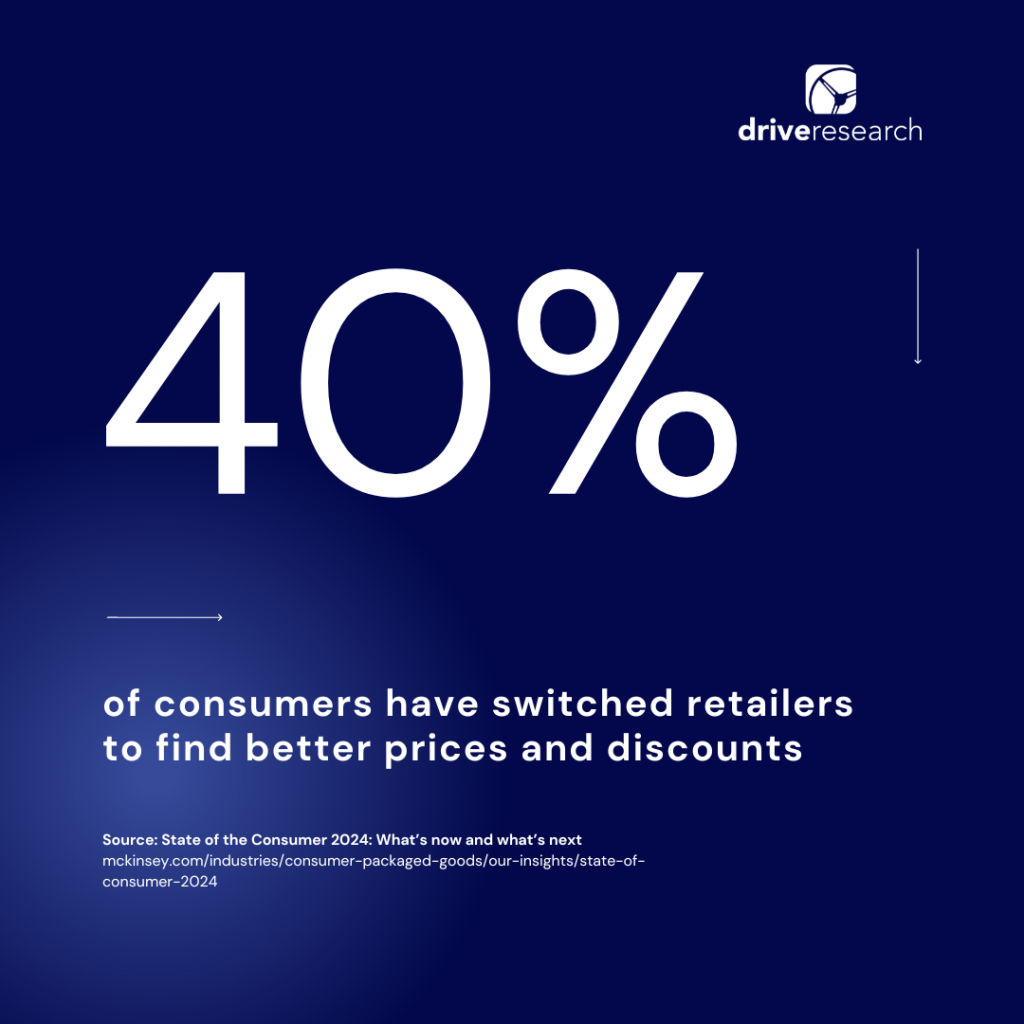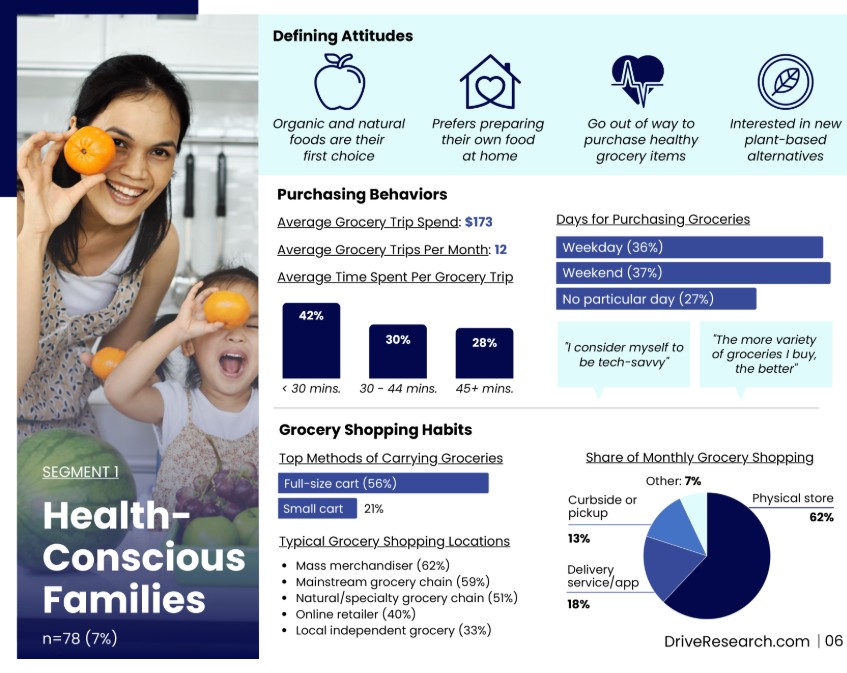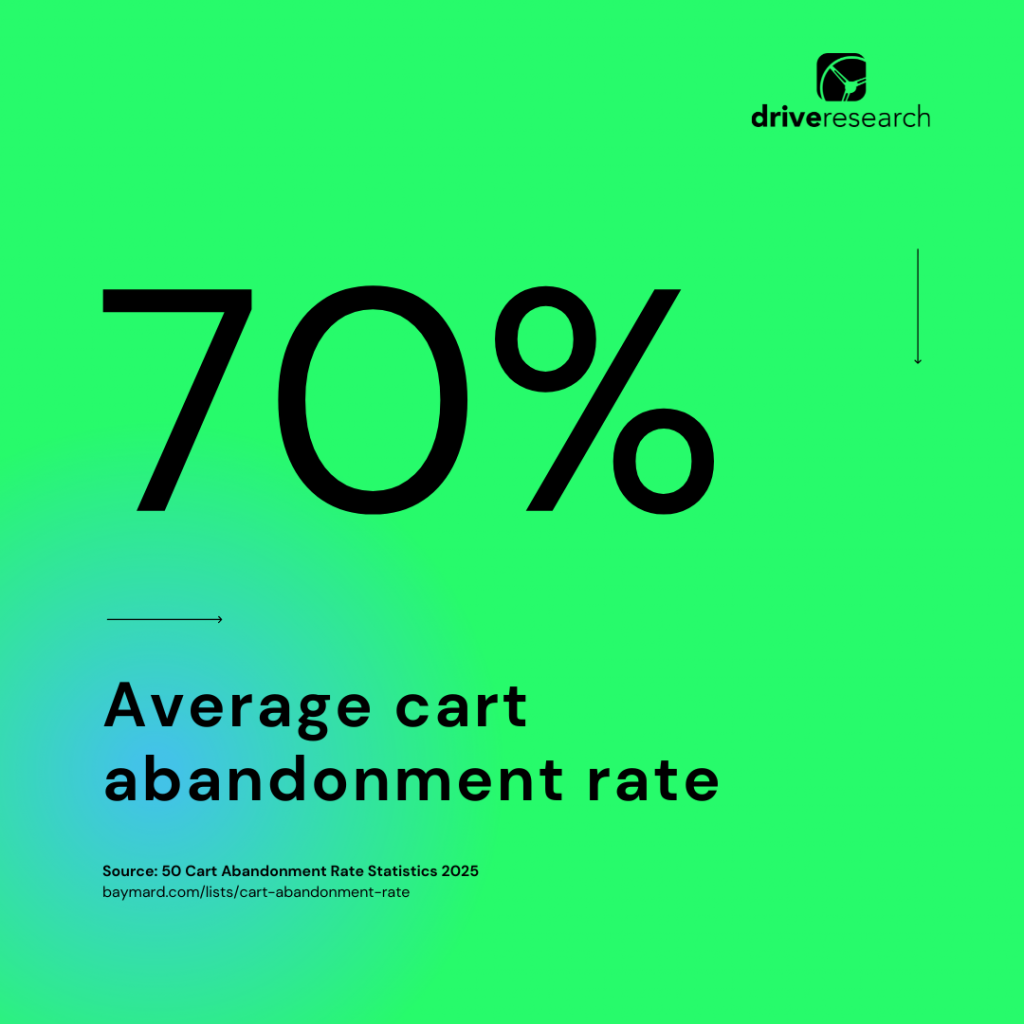
If you work in consumer packaged goods or CPG, you already know your shoppers are more unpredictable than ever.
They are switching brands, mixing channels, and juggling price, convenience, and values on every trip. What feels less clear is why they behave the way they do and what you can do with that insight.
Here lies the power of consumer behavioral analysis. In our experience conducting CPG market research, we see the biggest wins when brands stop relying only on claimed preferences in surveys and start pairing them with actual behavior from retail, ecommerce, and loyalty data.
In this guide, I will walk through what consumer behavioral analysis is, why it matters for CPG, the research methods involved, and how to run a study step by step.
What Is Consumer Behavior Analysis?
Consumer behavior analysis is the practice of studying what people actually do as they discover, evaluate, buy, and rebuy products, then connecting those patterns back to who they are and why they decided that way.
For CPG brands, this often includes:
- What shoppers put in their baskets (in-store and online)
- How often they buy and in what pack sizes
- Where they shop and which channels they prefer
- How they respond to price changes, promotions, and new competitors
- How they browse and drop off across digital touchpoints
Good behavior analysis does two things at once:
- Describes behavior: “Shoppers in Segment A buy our product every 3 weeks, mostly through click-and-collect, and often with private label competitors in the same basket.”
- Explains behavior: “They are price sensitive, look for convenience, and treat our brand as a backup when their preferred item is out of stock.”
This combination of the “what” and the “why” is what turns raw data into a roadmap for marketing, product development, and channel strategy.
Why It Matters
Consumer behavior is moving faster than most dashboards. They are constantly experimenting with new brands, new formats, and new retailers while inflation and channel fragmentation keep reshaping what “loyalty” even means.
Recent research from McKinsey found that in advanced markets, more than one third of consumers have tried different brands and around 40% have switched retailers to find better prices and discounts.

For CPG leaders, this matters because:
- Historic norms (like “brand X is always number one in this category”) are less reliable.
- Traditional attitudes alone rarely predict which shoppers will actually switch, stock up, or downgrade.
- Media, promotion, and innovation budgets are too tight to rely on gut feel.
Role of behavior vs. stated preferences in decision-making
This is one of the most important ideas in the whole topic.
Surveys, interviews, and panels give you stated preferences. Shoppers tell you what they believe, remember, or think you want to hear. For example:
- “I always buy Brand A.”
- “Price is not the main factor for me.”
- “I discovered the product on social media.”
Behavioral data provides the observable reality behind those statements:
- Purchase histories show that some “loyal” shoppers actually split their spend across three or four brands.
- Retail data reveals that price changes drive noticeable volume shifts, even when few respondents say they are price sensitive.
- Path-to-purchase analysis may show that online search or retailer recommendations actually matter more than social content.
In our experience, the biggest breakthroughs come from combining the two:
- Use quantitative and qualitative research to understand motivation, attitudes, and context.
- Use behavioral data to understand what truly predicts decisions and how often those decisions repeat.
When behavior and stated preferences tell the same story, you can invest with confidence. When they diverge, that gap is where strategy gets interesting.
Consumer Behavior Analysis Research Methods
There is no single “right” method. Most CPG behavior analysis projects use a combination of quantitative, qualitative, and sometimes more advanced analytics to connect the dots.
Quantitative data
Quantitative data gives you scale and statistical confidence. For CPG brands, typical sources include:
- Retail and POS data
Scanner data from retailers, syndicated providers, or your own systems. This shows units, value, share, price elasticities, and promotion response. - Loyalty and CRM data
Repeat purchase behavior, member vs. non-member trends, coupon redemption, and store switching among registered shoppers. - Ecommerce and clickstream data
Product views, add-to-cart events, cart abandonment, and conversion rates across your DTC site, marketplaces, and retailer.com. - Survey data with behavioral hooks
Custom surveys that ask about actual behaviors (last purchase, preferred channel, frequency) instead of only attitudes. When we run these studies, we often connect survey responses with loyalty identifiers or panels that include purchase tracking, which creates a richer picture.
Qualitative data
Qualitative methods are essential if you want to understand why buyers behave in certain ways.
For CPG behavior analysis, we often recommend:
- In-depth interviews (IDIs) with shoppers
One-on-one conversations that explore how people plan shopping trips, what triggers stock-ups, how they choose between brands, and what role different channels play. - Online communities and diaries
Participants log their shopping, cooking, or consumption behaviors over time. For example, we might ask households to share pantry photos, receipts, or short videos when they try a new product. - Shop-alongs or virtual shop-alongs
Observing shoppers in-store or on a retailer website while they talk through their decisions in real time. - Concept and UX testing for DTC
Exploring how packaging, product detail pages, reviews, and subscription options influence behavior on your owned channels.
Qualitative work does not replace the numbers. Instead, it explains patterns you see in retail or digital data and helps teams design better products.
Mixed methods and advanced analytics
The most powerful behavior analysis projects usually combine methods.
A few examples of how this looks in practice:
- Survey a set of shoppers, then connect their responses to loyalty or ecommerce data where possible.
- Use qualitative interviews to identify potential drivers of behavior, then build a quantitative model to test which drivers truly predict purchase.
- Segment your base using both attitudes and behavior to create segments that are easy for marketing, sales, and category teams to activate.
Here is a great example of a grocery shopper segment we created from a survey of 1,000+ consumers.

On the analytics side, common techniques include:
- Segmentation and clustering to group shoppers by how and how often they buy.
- Choice and tradeoff modeling to understand which features or claims have the biggest impact on switching.
- Retention and churn models to predict which households are likely to lapse and why.
- Path and funnel analysis to see where digital shoppers drop off and which touchpoints matter most.
You do not need every advanced method on day one. The key is to match the technique to the business question and the data you actually have.
How Behavior Analysis Research Can Help Brands
Once you start analyzing real behavior, several use cases open up quickly. Here are three that usually resonate with our CPG clients.
Benchmarking & Trendspotting
Behavior analysis gives you a baseline for how shoppers currently interact with your brand and category.
For example, you can benchmark:
- Household penetration and repeat purchase rates
- Average spend per trip and per household
- Basket composition and cross-category affinities
- Channel mix across grocery, mass, club, convenience, and online
From there, you can track:
- How a price increase affects repeat rates across segments
- Whether a new competitor is drawing existing buyers away or just growing the category
- How a new retailer listing changes your reach and share
In our work, we often see teams treating syndicated reports as “the answer” without digging into the behavioral patterns underneath. A focused behavior analysis helps you separate signal from noise and identify which trends are worth acting on.
Increasing Customer Retention
Retention is where behavior analysis usually pays back the fastest.
By studying actual shopper journeys, you can:
- Identify your highest-value customers, then see what distinguishes their behavior from more casual buyers.
- Discover the early warning signs of churn, such as longer gaps between purchases or downgrading to smaller pack sizes.
- Design loyalty programs and personalized offers that match real buying habits, not generic lifecycle templates.
Across ecommerce, the average cart abandonment rate hovers around 70% in many studies, which shows just how often shoppers start but do not finish purchases.

For brands with an online presence, understanding who abandons and why gives you a direct way to improve retention and repeat.
When we work with consumer goods teams on retention, we rarely start with “more discounts.”
Instead, we ask: Which behavioral triggers tell us this household is worth saving, and what message or offer are they most likely to respond to?
Better Customer Acquisition
Behavior data is equally powerful at the top of the funnel.
A few practical applications:
- Smarter audience targeting
Build lookalike audiences based on your most valuable, most loyal shoppers instead of “all recent purchasers.” - Retail media optimization
Use retailer and category insights to push spend toward placements and audiences that drive incremental sales, not just share-shifting from your own channels. - Message and creative refinement
Pair ad concept tests with behavior data to see which claims, visuals, or formats actually change purchase behavior, not just click-through. - New product and pack strategy
Analyze how shoppers currently solve the need you want to address. For example, which adjacent categories, private label options, or alternative formats are they using instead of your core line?
Behavior analysis shifts acquisition from “spray and pray” to a targeted approach grounded in how real households shop and consume.
How to Conduct Behavior Analysis Research
If you are wondering how to get started, this simple framework works whether you are running a full-scale CPG behavior analysis study or a focused pilot in one category.
Define Your Customers and Segments
First, get clear on who you care about.
A few questions we often ask clients:
- Are you focused on new buyers, existing buyers, or both?
- Which retailers or channels matter most in the next 12 to 18 months?
- Which life stages, household types, or need states are the highest priority?
The important thing is to avoid a “data first, questions later” approach that leaves teams drowning in dashboards.
Gather The Data
Next, map out what you already have and what you need to collect. Common inputs:
- Internal data
Retail shipment and depletions, DTC ecommerce analytics, loyalty and CRM, promotion calendars, and media spend. - Syndicated and retailer data
POS and shopper insights from major retailers and data providers. - Custom research
Surveys, online communities, interviews, or shop-alongs designed specifically for your category and growth questions.
In our experience, CPG brands often underestimate the value of their own scattered data. One of the most impactful steps is simply getting key sources into a consistent structure so they can be analyzed together.
Analyze the Data
With the data assembled, you can start turning it into insight. Typical steps include:
- Clean and harmonize
Align product hierarchies, units, and time frames. Fix obvious outliers and missing values so downstream analysis is reliable. - Build descriptive views
Look at penetration, repeat rate, frequency, basket size, and channel mix across your segments and key retailers. - Layer on drivers and experiments
Connect behavior to factors like price changes, promotions, media bursts, assortment changes, and distribution gains or losses. - Apply advanced methods where needed
For example, you might use a segmentation model to refine your target groups or a churn model to flag at-risk households.
When we run these studies, we spend a surprising amount of time simplifying. A clear, well-structured set of views that a brand team can revisit each quarter is more valuable than a one-time model nobody can interpret.
Apply the Data
The most important step is often the one that gets the least attention: taking action.
Behavior analysis should answer questions like:
- What should we change about our pricing and pack strategy, and where?
- Which retailers and channels deserve more support based on shopper behavior?
- How should we prioritize audiences and messages in our next campaign?
- What do our best customers need to see to stay with us another year?
In our work with retail and consumer-facing brands, we often turn findings into very practical outputs:
- Audience briefs and activation guides for media partners
- Category stories for joint business planning with retailers
- Innovation pipelines that reflect real usage and substitution patterns
- Quarterly scorecards that show how behavior is shifting over time
If your team cannot point to specific decisions that changed because of consumer behavior analysis, the project is not finished yet.
Contact Our Behavior Analysis Research Company
Consumer behavior is not getting simpler. The CPG teams that win are the ones who invest in understanding what people actually do, not just what they say.
Our market research company specializes in combining behavioral data, custom surveys, and qualitative insight to help brands answer questions like:
- Who are our most valuable shoppers, and how do we keep them?
- Which behavioral levers will actually move share in the next year?
- How should we adapt our pricing, channel, and innovation strategy to real-world behavior?
If you want a partner who can help you design and execute consumer behavior analysis studies, interpret the results, and turn them into clear actions for your brand, we would be happy to talk.






